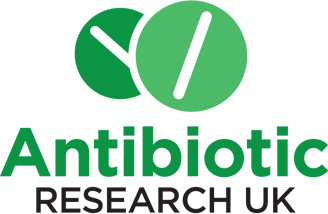Antibiotic Resistance Research Strategy
Antibiotic-resistant bacteria kill hundreds of thousands of people a year. Without a solution that number could rise to 10 million a year by 2050.
In the UK, estimates of death rates from resistant infections are somewhat imprecise. Resistance is not a permitted category for cause of death on death certificates. Figures cite between 2,000-12,000 deaths each year. Until we have a national antibiotic resistance register, which is one of our action points in our five-year plan, then it will be impossible to have firm figures. Our view is that 12,000 deaths a year is probably an underestimate.
It can take more than ten years and hundreds of millions of pounds to develop a new antibiotic. We are the only charity in the world dedicated to antibiotic resistance research. To have an impact on the problem, we focus on reducing those timelines and costs. We use smart approaches to research that do not follow the conventional drug-development procedures.
Our initial focus is on preserving our existing antibiotics, rather than finding new ones.
Antibiotic-resistant bacteria kill hundreds of thousands of people a year, and without a solution that number could rise to 10 million a year by 2050.
Our current research programme falls into three key areas:

Breaking the resistance that some bacteria show to existing antibiotics.

Identifying alternative treatments so that we can save antibiotics for where they are really needed

Providing small research grants to help academics at UK universities progress in their research
Please support crucial research to help extend the life of the world’s current antibiotics and prevent a potential global health crisis.
Why is this so important?
Multidrug-resistant Gram-negative bacteria are the biggest single threat facing modern medicine today. Around 50% of hospital infections are due to Gram-negative bacteria, and particularly the following four species, which are commonly found in the mouth, skin, blood and stomach:
Bacterial resistance can arise through a number of different mechanisms. Some resistant bacteria produce enzymes that break down antibiotics. While there are treatments that can stop these enzymes from working, resistance to those has also arisen. Some bacteria are resistant to virtually all antibiotics, with the exception of colistin. While resistance to colistin has risen, it is not yet present in these multidrug resistant strains. However, bacteria can pass the gene for resistance to each other, even between species. If this happens, there are no treatments left.
Find out more about antibiotics, bacteria and common bacterial infections.

Global Importance
A number of authorities around the world including the G7, G8, G20, the WHO and the UN, have spoken about the rapidly emerging crisis of antibiotic resistance. They have proposed action plans, but too little is being done to impact the problem. There is an urgent need to invent new antibiotics and/or other treatment methods. However, it may already be too late for this to happen in time and at the scale required to prevent a health crisis. That is why our work is so important. We must take action now to ensure a safe future for our children and grandchildren. Antibiotic Research UK has to date funded no research that has involved the use of animals. However were it to do so it would follow the 3Rs principles of Refinement, Reduction and Replacement. The charity is a member of the Association of Medical Research Charities and follows their guidance procedures on animal use – https://www.amrc.org.uk/use-of-animals-in-research
Please consider making a donation or fundraising to support antibiotic resistance research.

